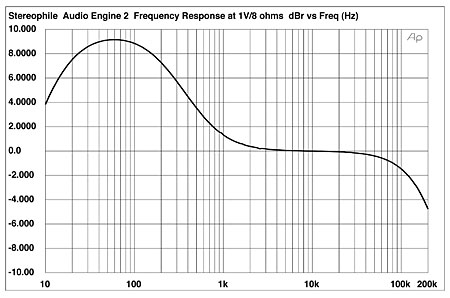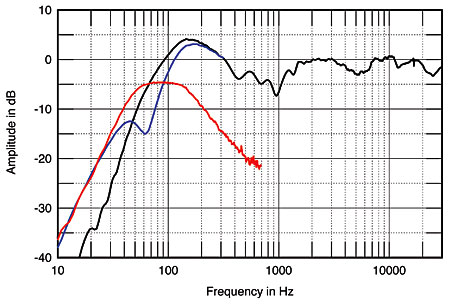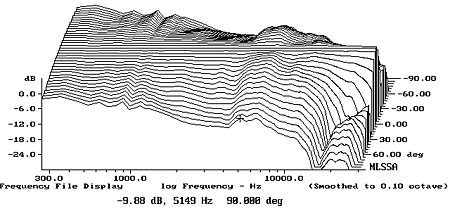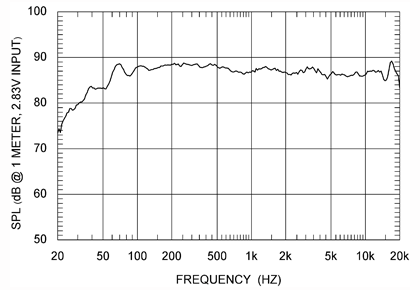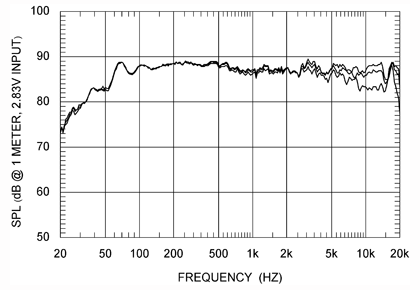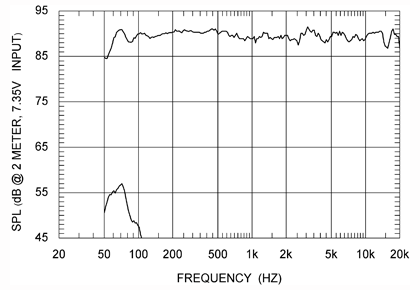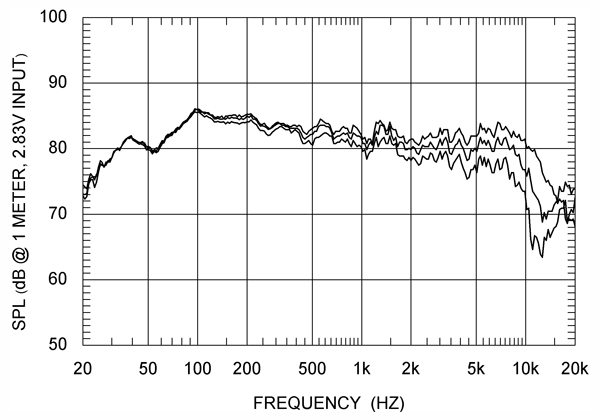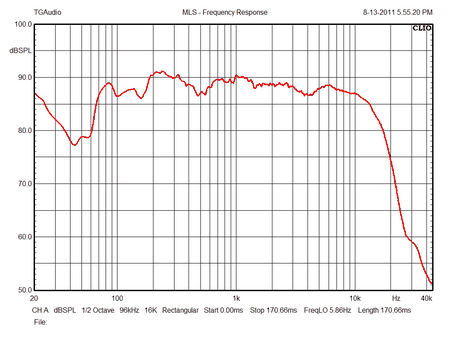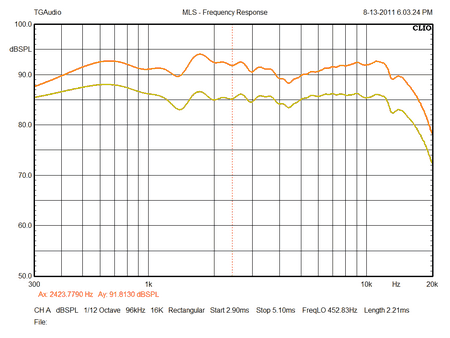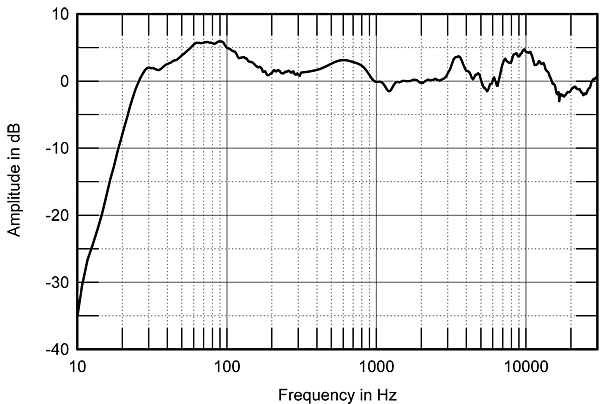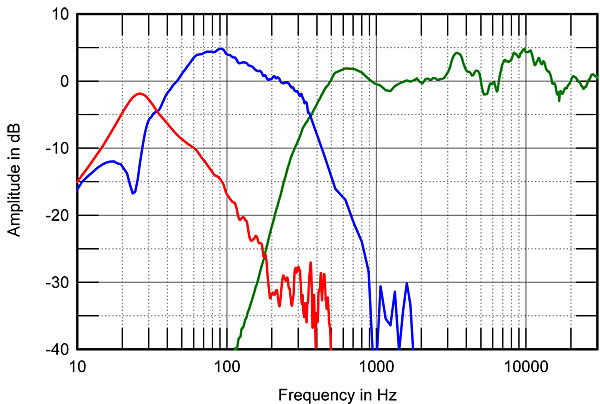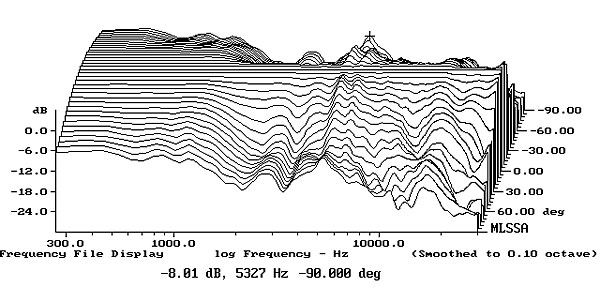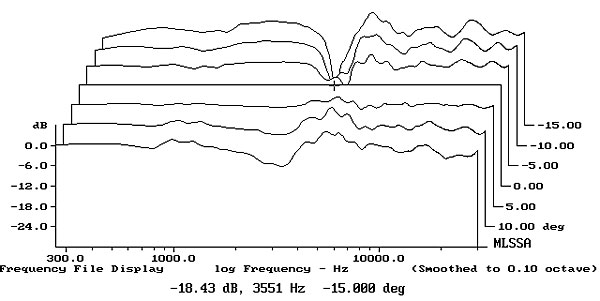 |
| FIGURE 18.22 Two small 7- to 8-in. two-way loudspeakers with similar directivity indexes, each one optimized to a different target. (a) The Yamaha NS-10M was designed to have constant sound power. (b) The JBL 4301 was designed to have constant on-axis frequency response. |
 |
| FIGURE 18.23 (a) and (b) show that the Yamaha NS-10M performance drifted from that of the original version shown in Figure 18.22a. It is now even closer to the performance of the Auratone 5C, shown in (b), but it is slightly smoother and has more extended bass. The loudspeaker in (c) has a basic similarity, but the midfrequency emphasis is moderated. It is lower in amplitude and slightly lower in frequency. The loudspeaker in (d) also has an underlying midfrequency emphasis but adds some high-Q resonances around 600 Hz and 2.5 kHz that add an annoying "personality" to the playback. Why? (e) shows a loudspeaker that seems to be trying to be flat but fails at both frequency extremes: "punchy" bass due to the 80–100 Hz, underdamped woofer bump, and rolled-off high frequencies. The fact that all of these monitors, some more than others, exhibit high-frequency roll-off is puzzling in an age when arguments are being made that bandwidth beyond 20 kHz is a necessity for monitoring. |
 |
| Manual from the manufacturer |
It's a legendary studio monitor, literally. The policy of designing NS10M is quite different from today's perspective. The loudspeakers intended to achieve flat response on not on-axis but sound power. Thus, without further equalization, NS10M might sounds too bright and forwarding under today's room treatments. Due to this characteristic, NS10M is used for checking vocal details in mixing.
Source: Toole, F. (2012). Sound reproduction: The acoustics and psychoacoustics of loudspeakers and rooms. Focal Press.
http://www.embedded.com/print/4214420 (Excerpt for Chapter 18.5.)
